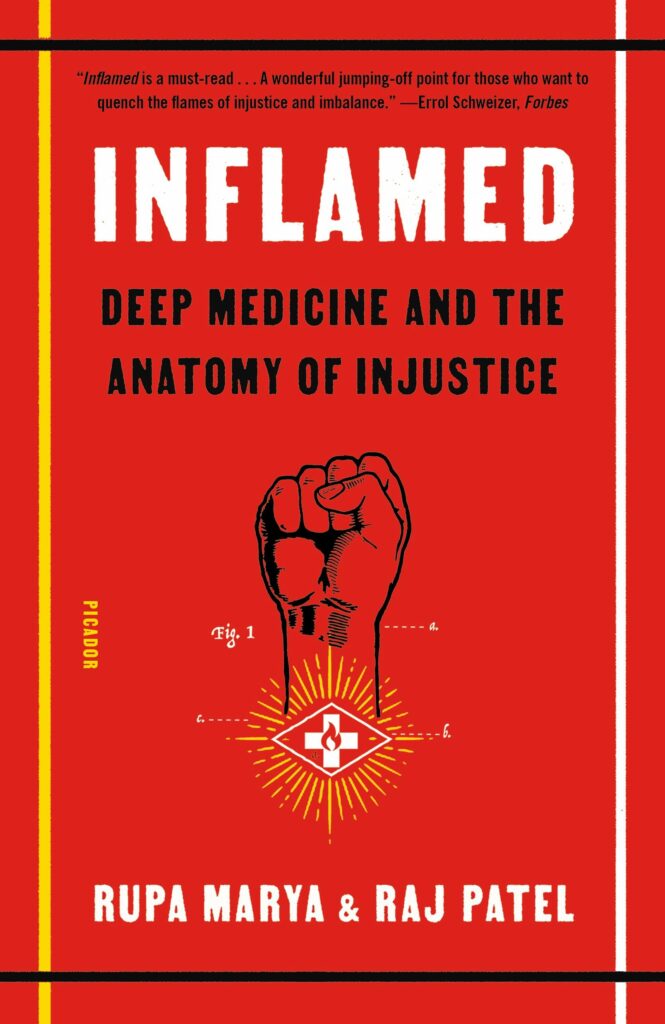
Rupa Marya and Raj Patel, authors of Inflamed: Deep Medicine and the Anatomy of Injustice, successfully cover an impressive range of topics in a coherent, extremely readable volume. When we speak of the book’s readability, in this case it is a testament to superb skill in using technical language when needed, without an additional burden for the reader. With ease, the chapters flow from human bodies to questions of our societies and our environment. In the authors’ own words, this is a “subversive political anatomical survey, taking individual bodily systems and showing how ancient and modern science connects that body to the web of life through histories and relationships of power.”
Inflammation as a pervasive condition accompanying many diseases serves as the core subject of this book, as well as a lens through which the effects of imperialism and colonialism are understood, and a potent metaphor for explaining the world we live in. The authors’ use of metaphor is nuanced and careful: it invokes traditional, indigenous knowledge and ways of living with the community and nature, opposed to the liberal individualist paradigms perpetuated through modern notions of commodified medicine. These metaphors—of the world’s bloodstreams, the environment’s nervous system, the forests within humans—serve as a good reminder of general systemic principles at play in the material world, and of the metabolic qualities of the world’s processes. However, the authors don’t let these metaphors run far from the core argument, or obfuscate it. A is like B does not mean that A is B; the authors skillfully avoid the common trap of conflation throughout the narrative. Where scientific rigour is called for, the tone and the references within provide it. Where emotions come in to respond to injustice, words are powerful and carefully chosen. It is hard to read the numerous examples of human experiences in this book, affected by systems that deteriorate our health and prevent us from accessing proper healthcare. Race, gender and class emerge as common markers in these stories, geographically spread from the imperial core to the furthest outposts of its colonies, but bound together by the same mechanisms of imperialist exploitation.
The authors choose to label the mechanism at the core of this generator of environmental, social and health crisis as settler colonialism. In an end note, its relationship with imperialism is noted, and the choice of centering settler colonialism is explained: “We come to this mindful that settler colonialism is a distinct form of control. We use this term in preference to imperialism because, particularly for the US reader, it’s easy to forget that the United States is a colonial project, and that the practices of empire are still enforced in the settler colony in which we write.” The reader accustomed to interpretation of the world-system through the lens of imperialism can acknowledge the authors’ positionality in this regard, and still recognise the patterns of imperialist mode of domination, exploitation, and extraction.
Finally, another important aspect of this book is its commitment to nuance. The skepticism towards liberal, corporate-fueled simplifications of the world, especially in the context of health and environment, is backed with the scientific method and historical experience, as well as the understanding of political and economic interests. In a responsible manner, using the example of COVID-19, the authors show the limits of this type of skepticism without conceding ground to anti-scientific conspiracies.
Inflamed: Deep Medicine and the Anatomy of Injustice by Rupa Marya and Raj Patel (Allen Lane Books, 2021) is available from Connolly Books, Temple Bar, Dublin.






